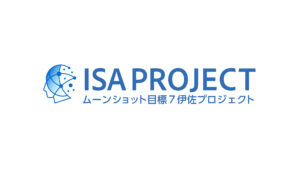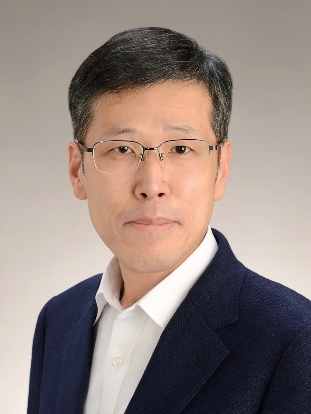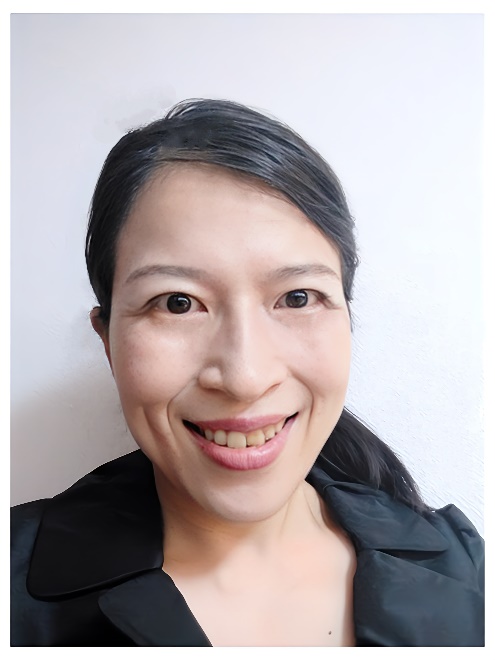Tatsuya Mima
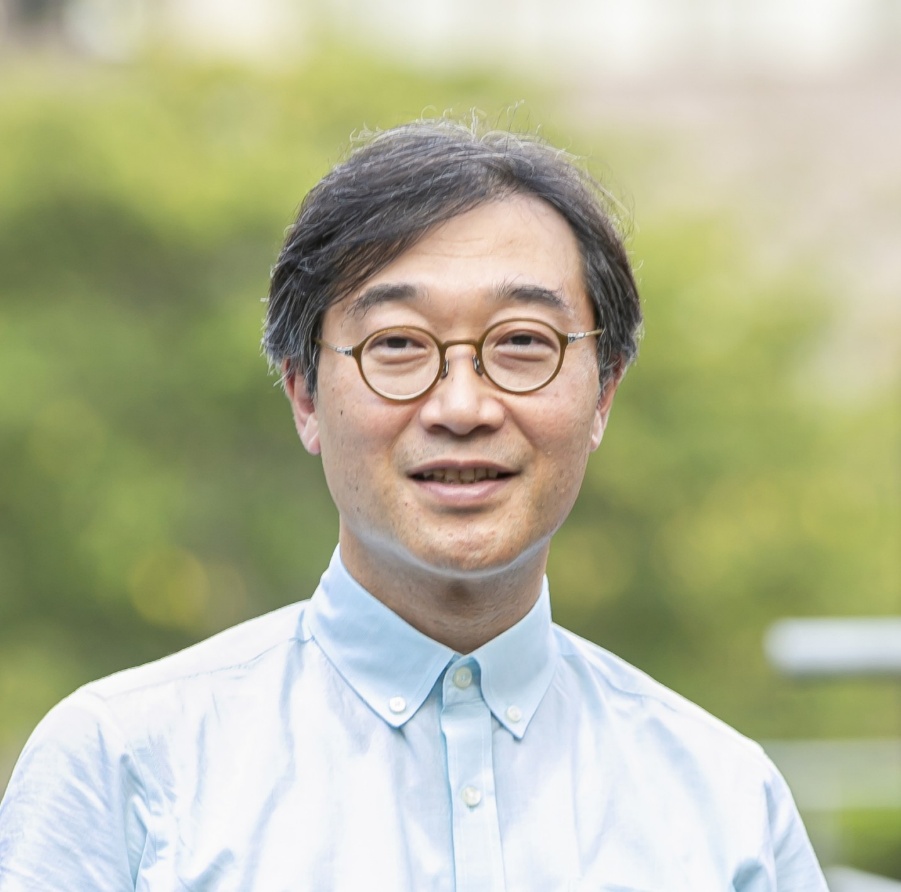
氏名Name
Tatsuya Mima
所属・職名Affiliation, Title, etc.
The Graduate School of Core Ethics and Frontier Sciences, Ritsumeikan University. Professor
研究室HPWebsite
一言メッセージShort Message
本プロジェクトでの研究概要Outline of the research in this project
We aim to develop an ensemble-type brain stimulation method that enhances the brain's reservoir function by phase modulation of multiple brain regions (circuits) simultaneously, thereby accelerating functional recovery in diseased brains. This approach builds upon our previous findings in rehabilitation research, where we demonstrated that simultaneous intervention in multiple brain circuits combined with motor tasks improved gait disturbances caused by stroke. We now seek to extend these insights into the field of cognitive neuroscience.
Furthermore, by integrating neuromodulation techniques with motor and cognitive tasks used in clinical dementia intervention, we aim to quantitatively assess brain plasticity under stress conditions induced by task performance.
For neuromodulation, we will employ two minimally invasive techniques: transcranial Static Magnetic Stimulation (tSMS), a simple and low-invasive method, and transcranial Ultrasound Stimulation (TUS), which enables non-invasive stimulation of deep brain regions such as the hippocampus and striatum. Through these methods, we aim to advance collaborative research within human study groups and with animal model groups.
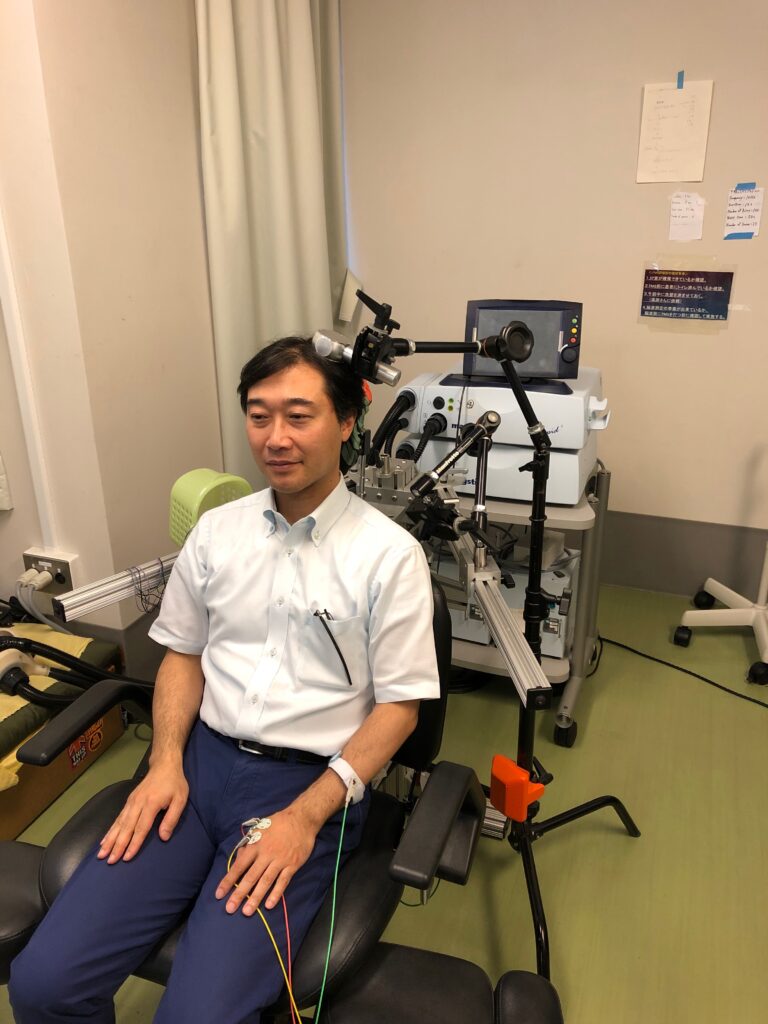
これまで主な研究内容Outline of main research so far
After receiving clinical training as a neurologist, I pursued research in neuroscience, focusing on the human motor system. My primary research theme has been human brain plasticity, with particular emphasis on elucidating network plasticity through the analysis of neural networks using electroencephalography (EEG) and magnetoencephalography (MEG). Additionally, I have been dedicated to both basic and clinical applications of various neuromodulation techniques, such as transcranial magnetic stimulation (TMS), transcranial direct current stimulation (tDCS), and transcranial static magnetic stimulation (tSMS).
In the analysis of neural networks, I have conducted investigations using human brain electromagnetic fields, applying various connectivity measurement techniques, including coherence analysis. Furthermore, my research on non-invasive brain stimulation has produced significant results in applying TMS to stroke rehabilitation and elucidating its underlying neuroscientific mechanisms. As part of collaborative studies, I have also explored diverse approaches, such as animal models for tSMS research.

主な経歴・受賞歴等Career, Awards, etc.
- 1990:
- Graduated from the Faculty of Medicine, Kyoto University
- 1990:
- Resident, Department of Neurology, Kyoto University Hospital
- 1991:
- Neurologist, Osaka Saiseikai Noe Hospital
- 1993:
- Enrolled in the Ph.D. Program, Graduate School of Medicine, Kyoto University
- 1997:
- Ph.D., Graduate School of Medicine, Kyoto University
- 1997:
- Visiting Research Fellow, National Institute of Neurological Disorders and Stroke (NINDS), National Institutes of Health (NIH), USA
- 2000:
- Assistant Professor, Comprehensive Center for Higher Brain Functions, Graduate School of Medicine, Kyoto University
- 2008:
- Associate Professor, Comprehensive Center for Brain Functions, Graduate School of Medicine, Kyoto University
- 2015:
- Professor, Graduate School of Core Ethics and Frontier Sciences, Ritsumeikan University
主要業績Major Publications
Shibata, S., Onishi, H., and Mima, T. (2024) TMS-EEG signatures of the effects of transcranial static magnetic field stimulation (tSMS) on cortical excitability. Scientific Reports 14: 22394.
https://doi.org/10.1038/s41598-024-72875-1
Sinha, A.*, Shibata, S.*, Takamatsu, Y.*, Akita,, T., Fukuda, A., Mima, T. (2024) Static magnetic field stimulation enhances shunting inhibition via a SLC26 family Cl− channel, inducing intrinsic plasticity. Journal of Neuroscience 44(9): e132422024.
https://doi.org/10.1523/JNEUROSCI.1324-22.2024
Nojima I, Horiba M, Sahashi K, Koganemaru S, Murakami S, Aoyama K, Matsukawa N, Ono Y, Mima T, Ueki Y. (2023) Gait-combined closed-loop brain stimulation can improve walking dynamics in Parkinsonian gait disturbances: a randomised-control trial. J Neurol Neurosurg Psychiatry 94(11): 938-944.
https://doi.org/10.1136/jnnp-2022-329966
Shimomura R, Shibata S, Koganemaru S, Minakuchi M, Ichimura S, Itoh A, Shimotake K, Mima T, (2023) Transcranial static magnetic field stimulation (tSMS) can induce functional recovery in patients with subacute stroke. Brain Stimulation 16(3): 933-935.
https://doi.org/10.1016/j.brs.2023.05.024.
Shibata, S., Watanabe, T., Otsuru, N., Onishi, H., Mima, T. (2023) Very low-frequency transcranial electrical stimulation over the primary motor area can influence the voluntary movement initiation in humans. Brain Stimulation 16(2): 442-444.
https://doi.org/10.1016/j.brs.2023.01.1679
Shibata, S., Watanabe, T., Matsumoto, T., Yunoki, K., Horinouchi, T., Kirimoto, H., Zhang, J., Wang, H., Wu, J., Onishi, H., & Mima, T. (2022). Triple tSMS system (“SHIN jiba”) for non-invasive deep brain stimulation: a validation study in healthy subjects. Journal of NeuroEngineering and Rehabilitation, 19(1), 129. (査読有り)
https://doi.org/10.1186/s12984-022-01110-7
Gyoda, T., Nojima, I., Lin, S.-C., Koganemaru, S., Mima, T., Tanabe, S., & Huang, Y.-Z. (2022). Strengthening the GABAergic System Through Neurofeedback Training Suppresses Implicit Motor Learning. Neuroscience, 488:112–121.
https://doi.org/10.1016/j.neuroscience.2022.02.002
Hamada, M., Matsubayashi, J., Tanaka, K. Furuya, M., Matsuhashi, M., Mima, T., Fukuyama, H., Mitani, A. (2022) People with High Empathy Show Increased Cortical Activity Around the Left Medial Parieto-Occipital Sulcus after Watching Social Interaction of On-screen Characters. Cerebral Cortex
https://doi.org/10.1093/cercor/bhab435
Matsubara T., Ahlfors S.P., Mima T., Hagiwara K., Shigeto H., Tobimatsu S., Goto Y. & Stufflebeam S. (2021) Bilateral Representation of Sensorimotor Responses in Benign Adult Familial Myoclonus Epilepsy: An MEG Study. Front. Neurol. 12:759866.
https://doi.org/10.3389/fneur.2021.759866
Tonomura, T., Satow, T., Hyuga, Y., & Mima, T. (2021). Use of transcranial direct current stimulation in poststroke postural imbalance. BMJ Case Rep. 14(6):e243212.
doi: 10.1136/bcr-2021-243212.
https://doi.org/10.1136/bcr-2021-243212.

